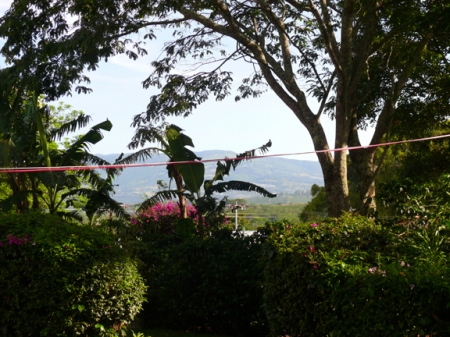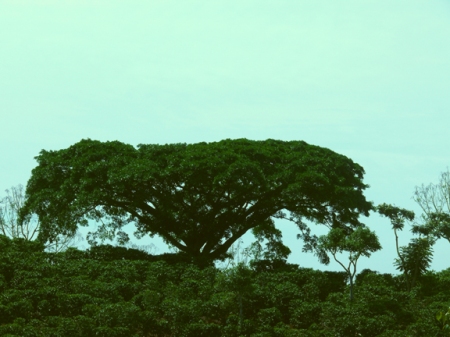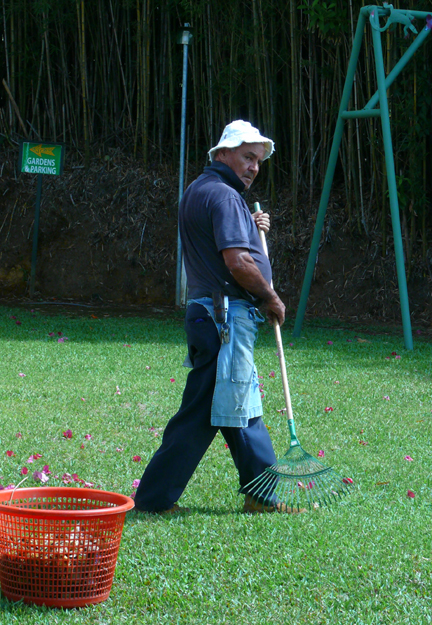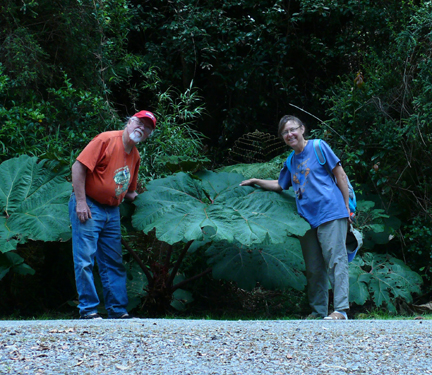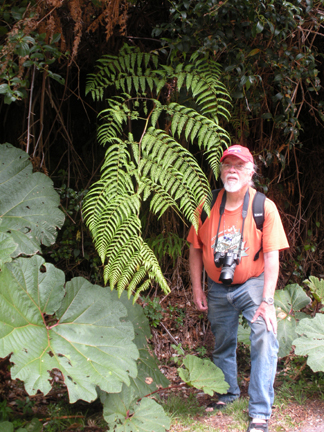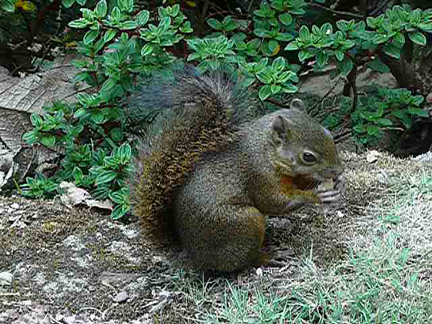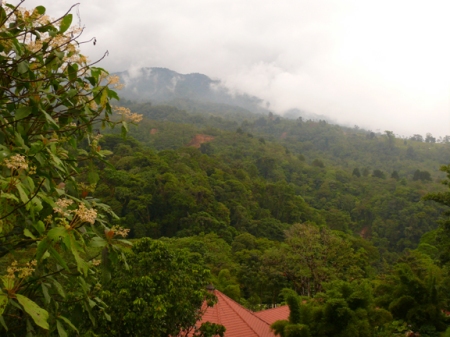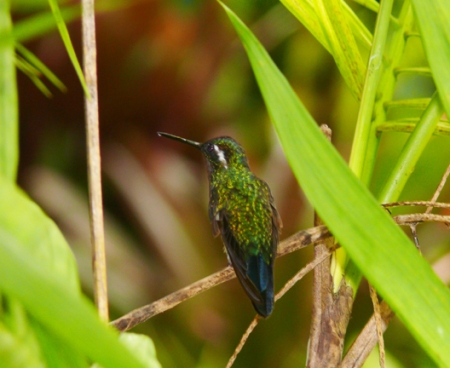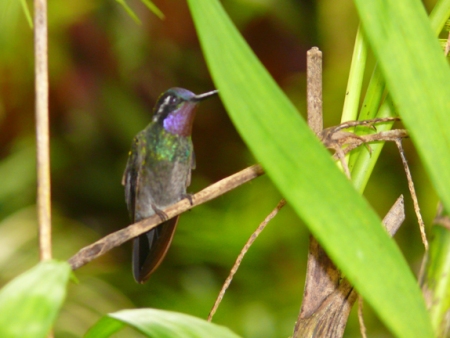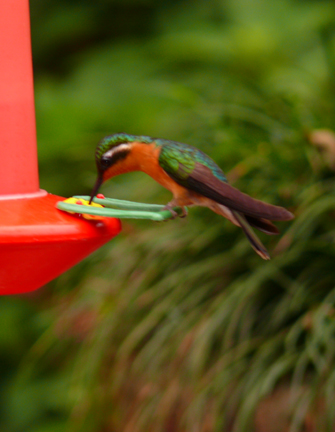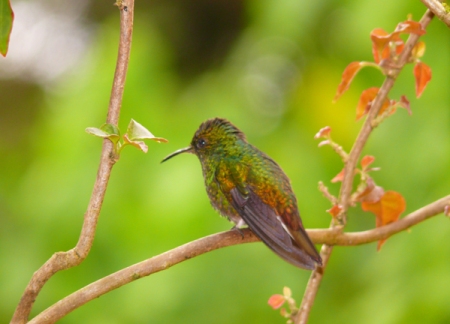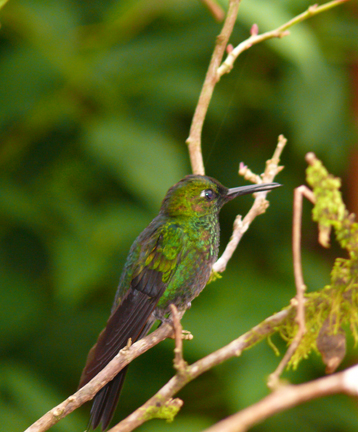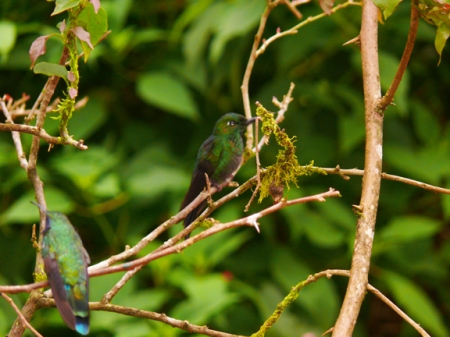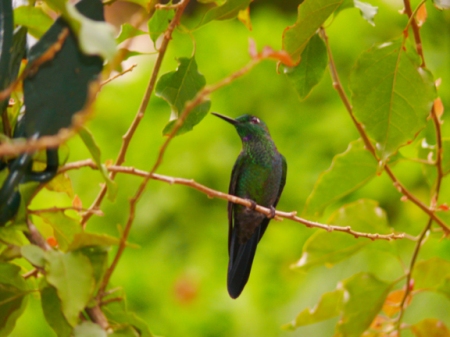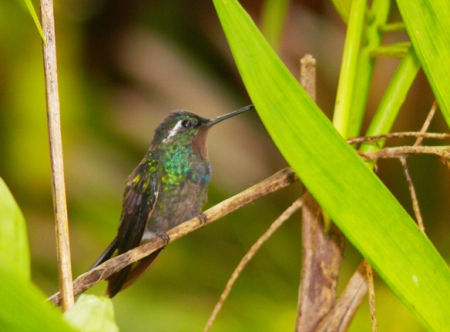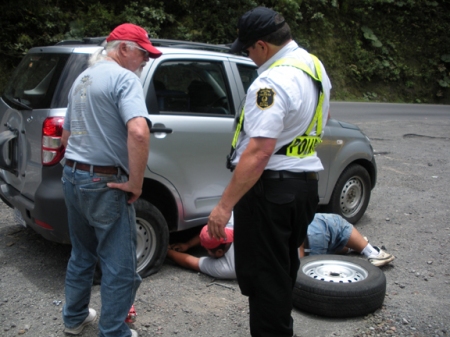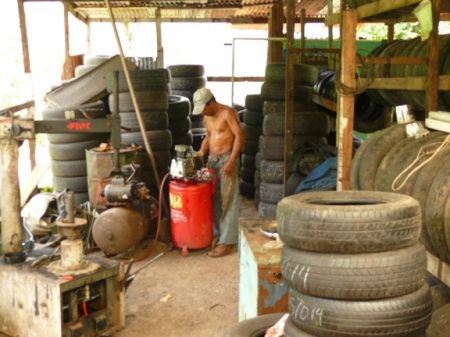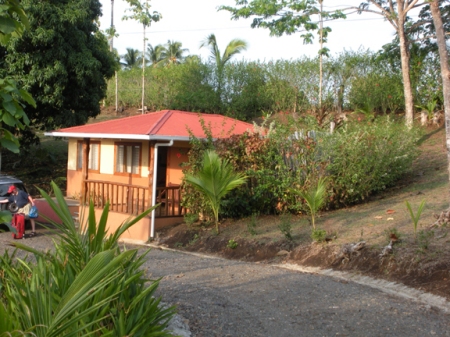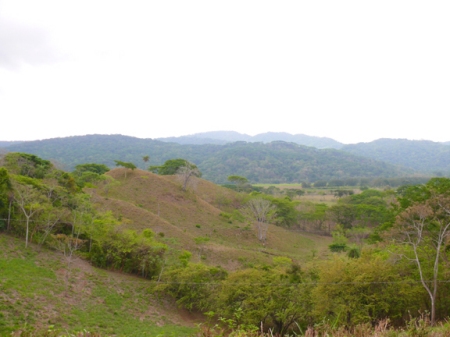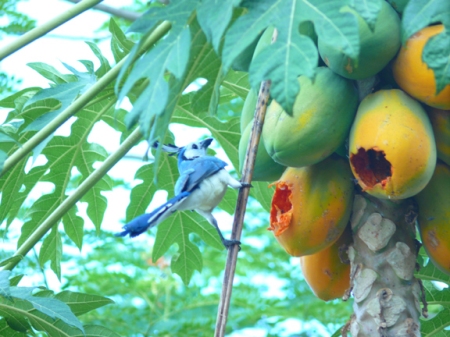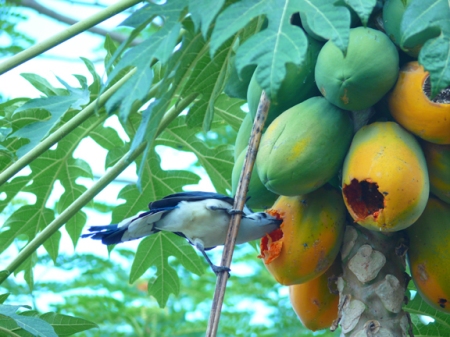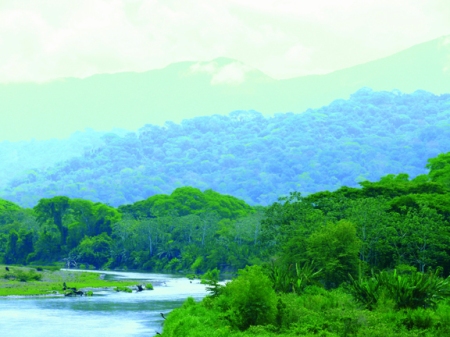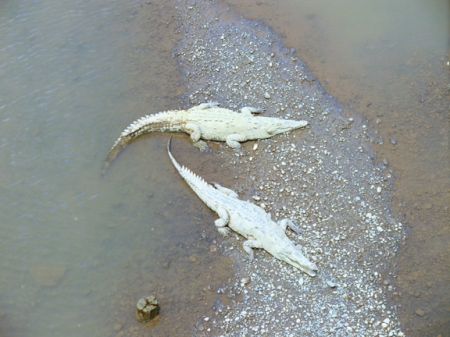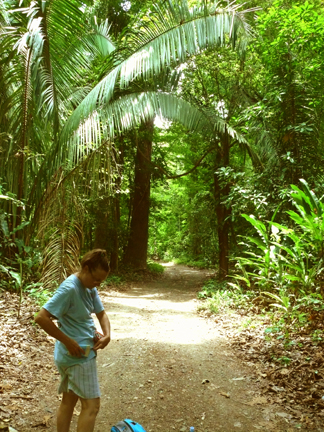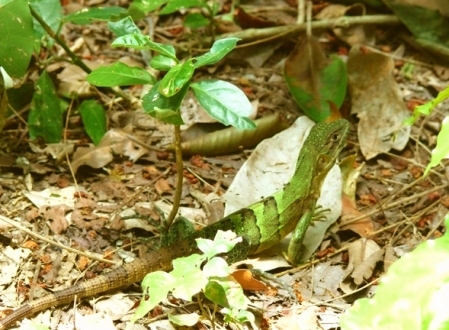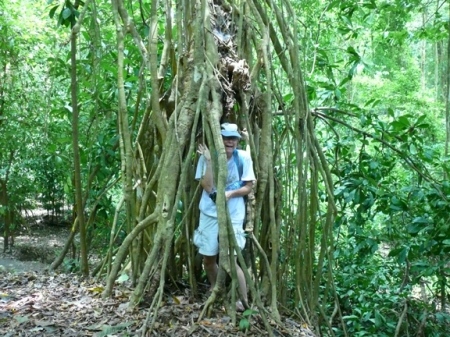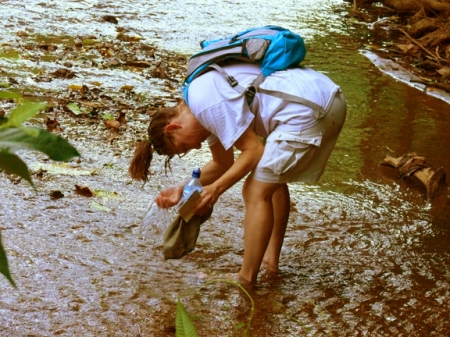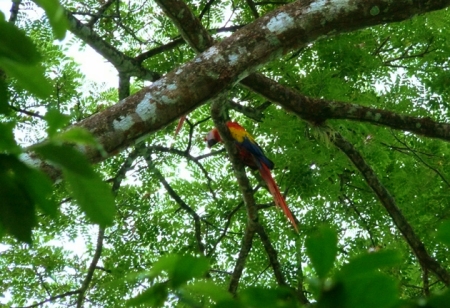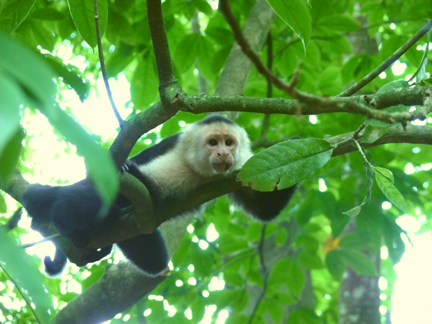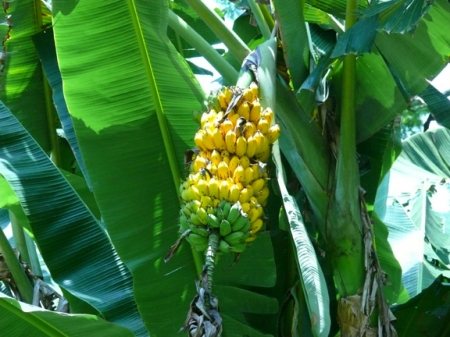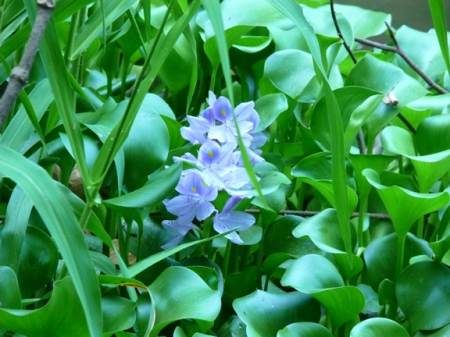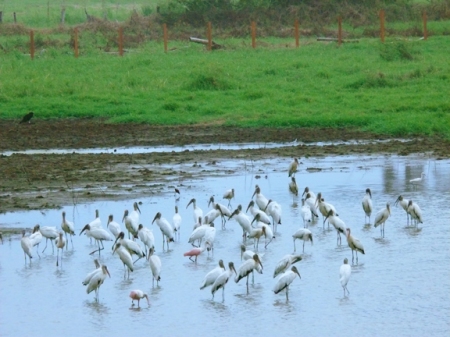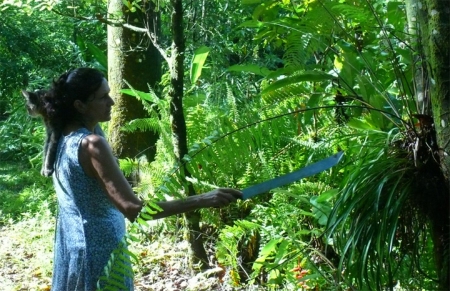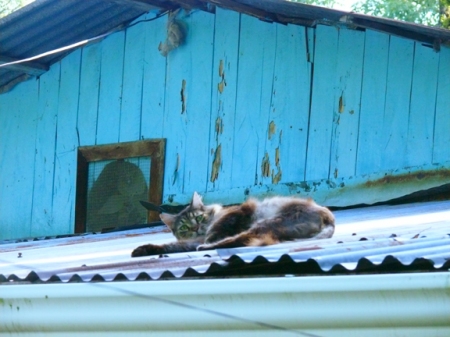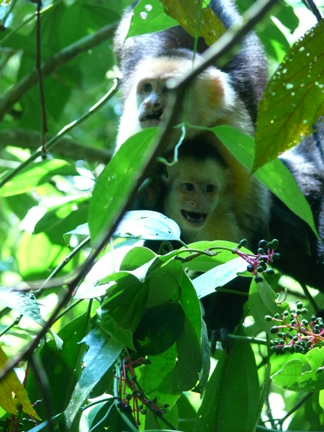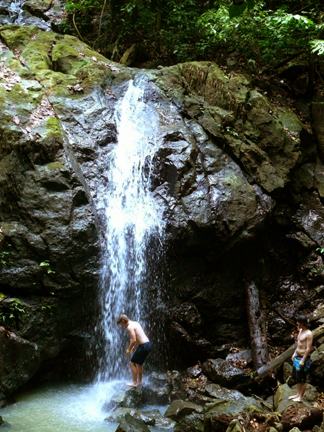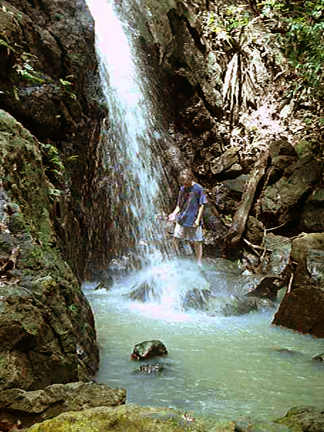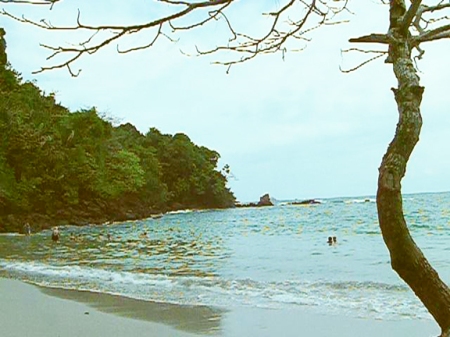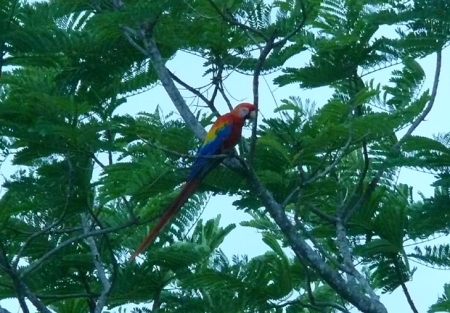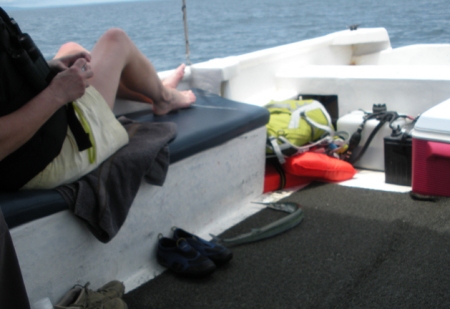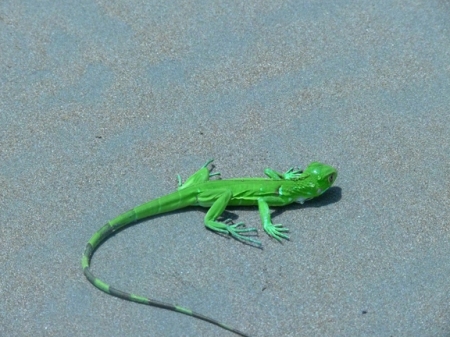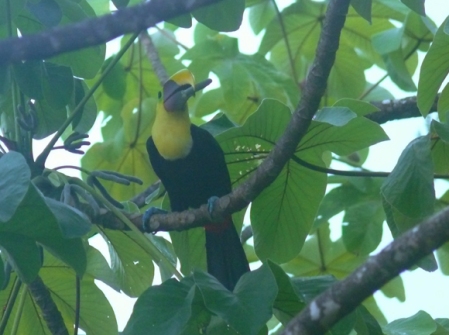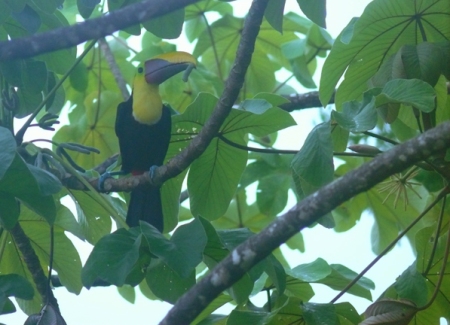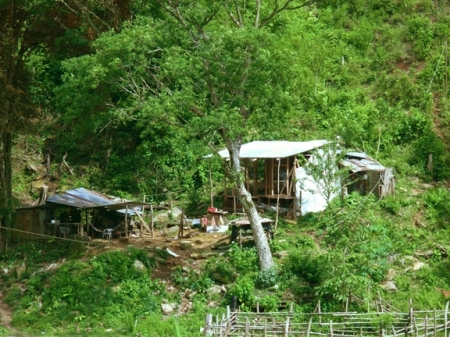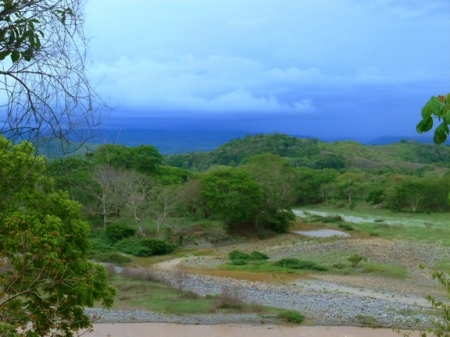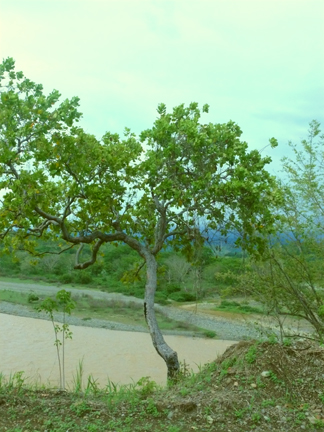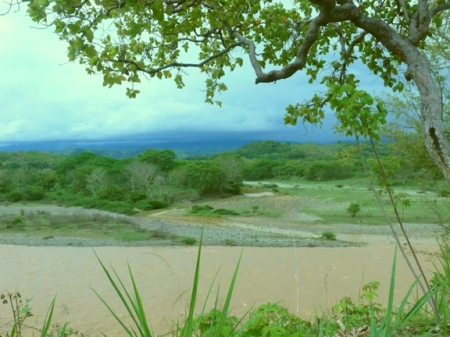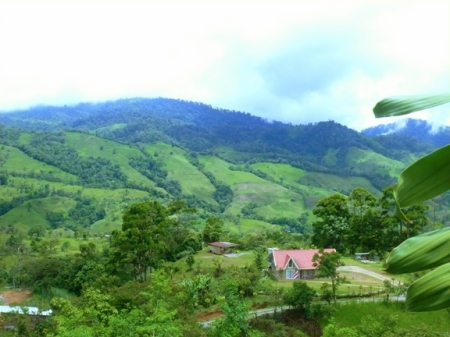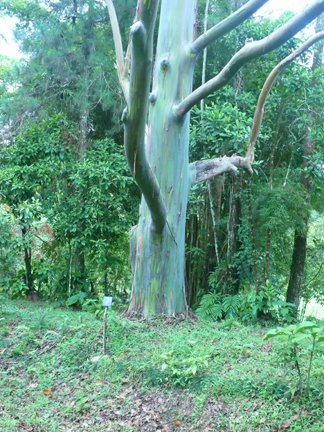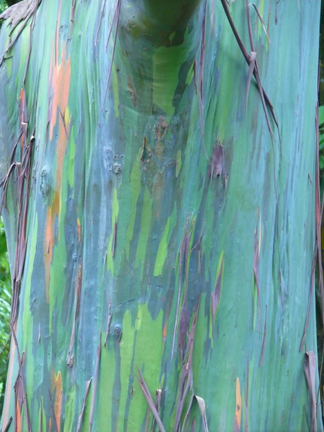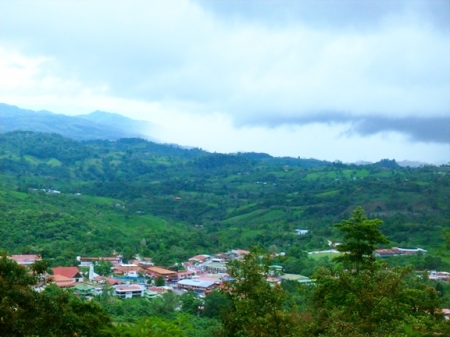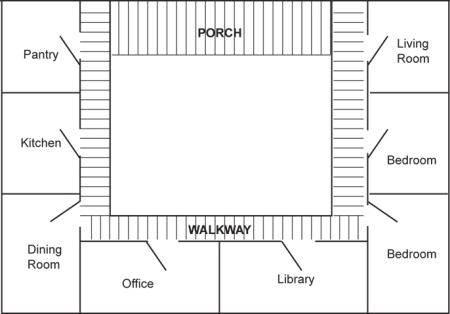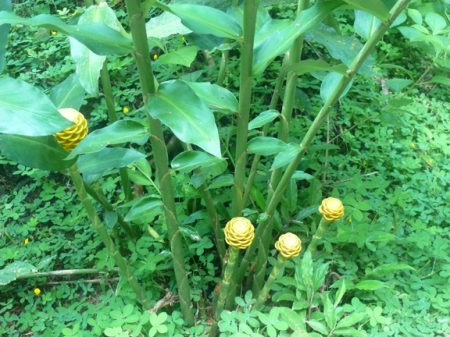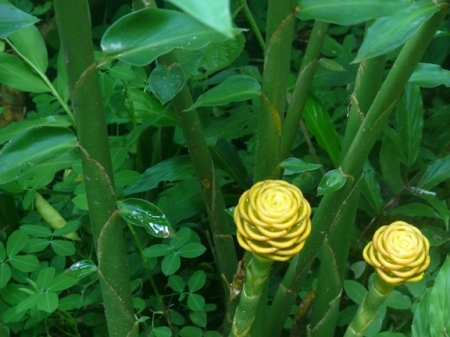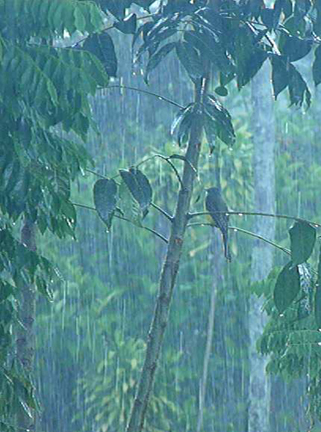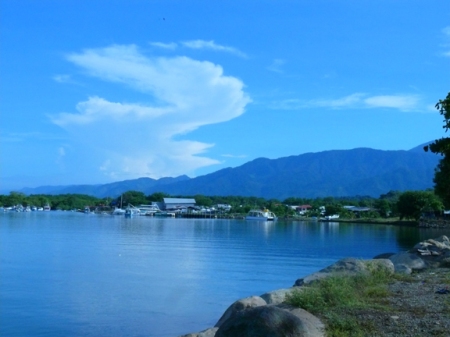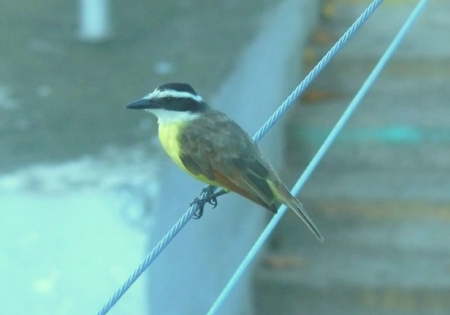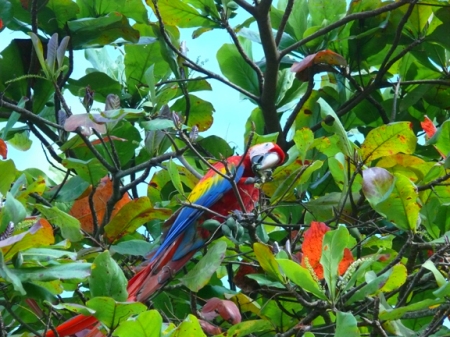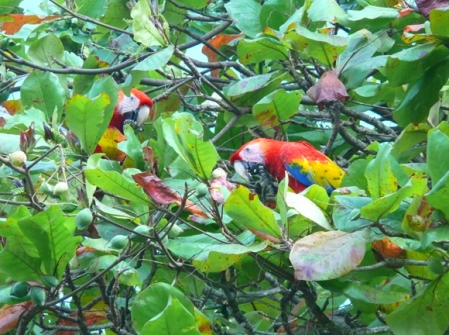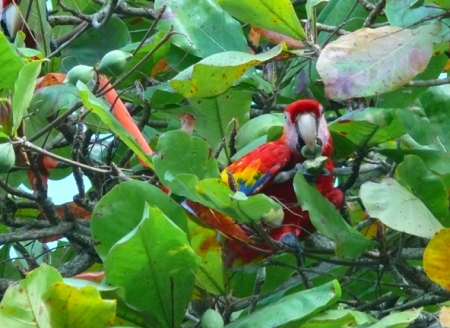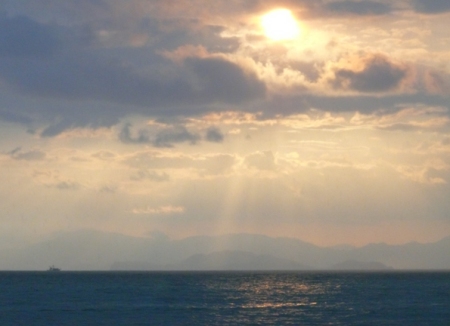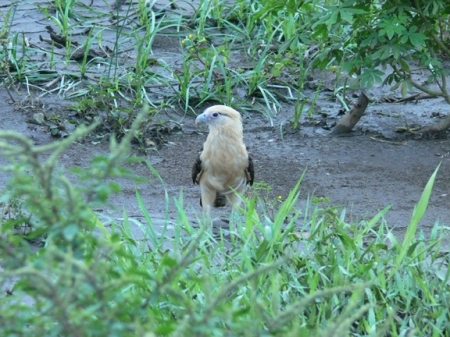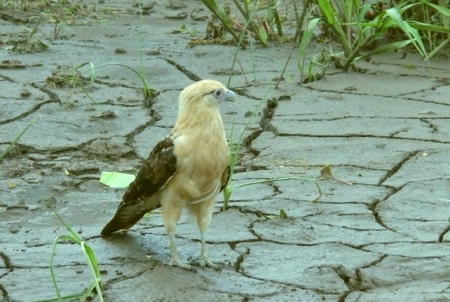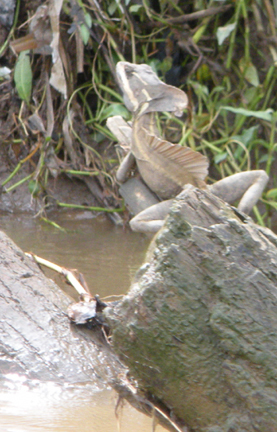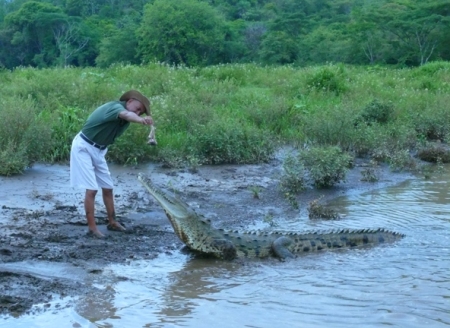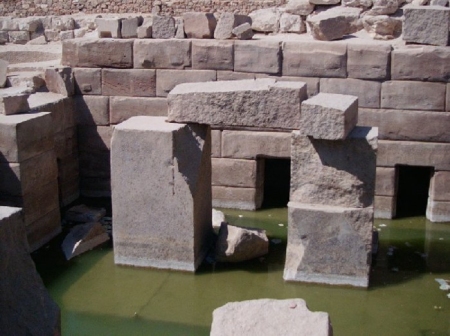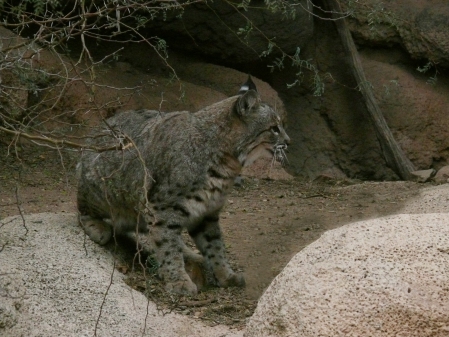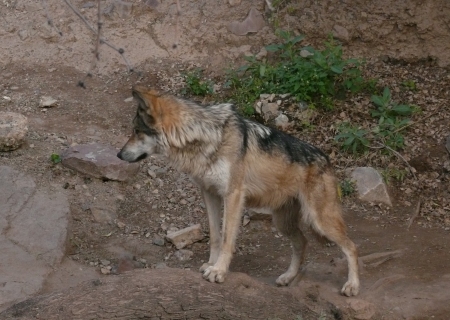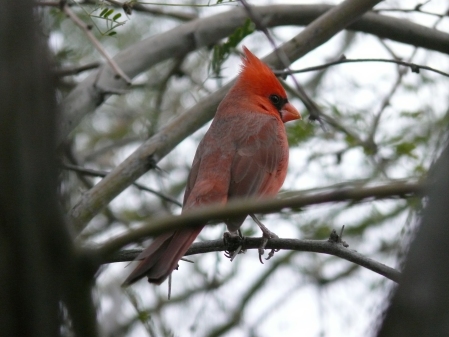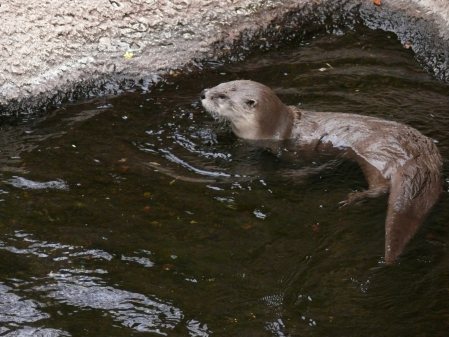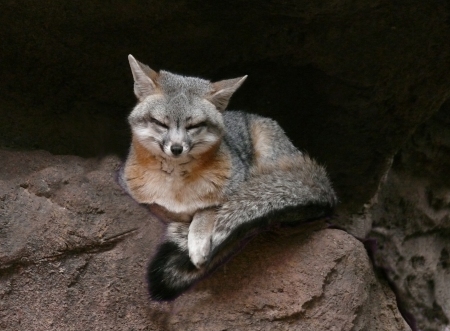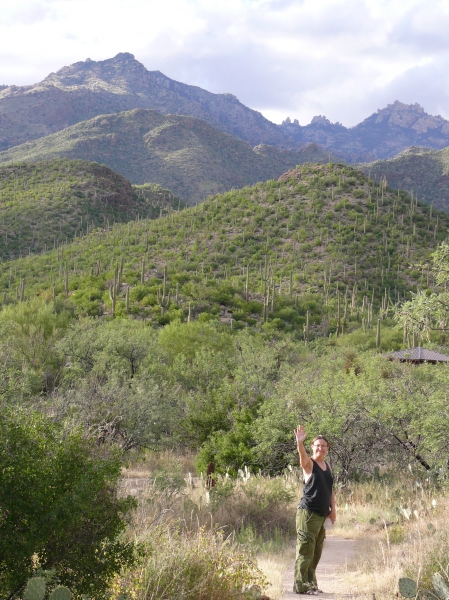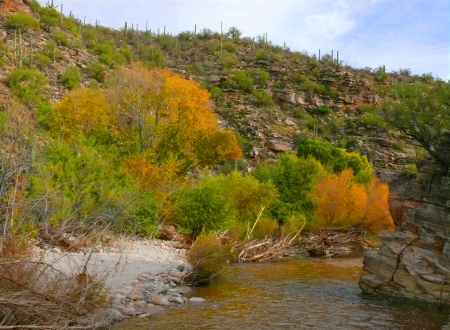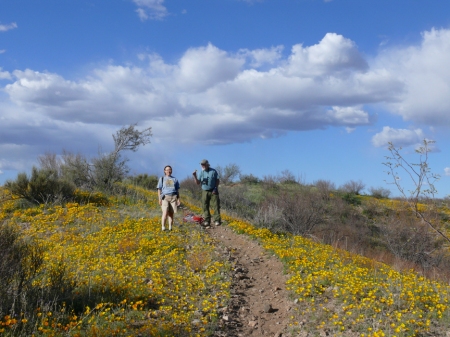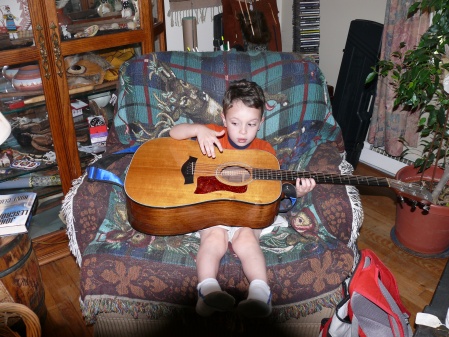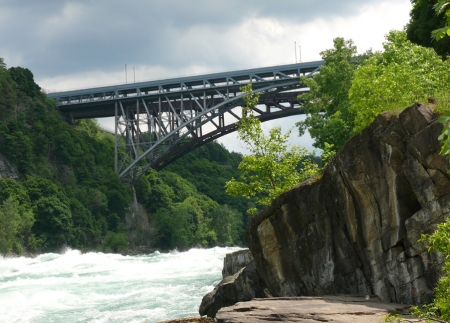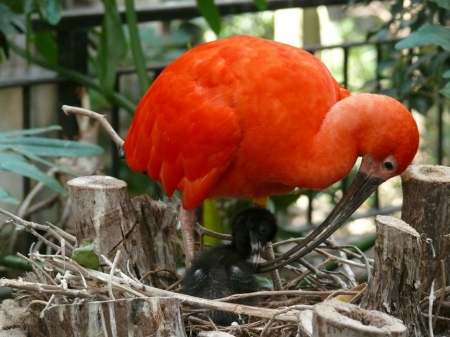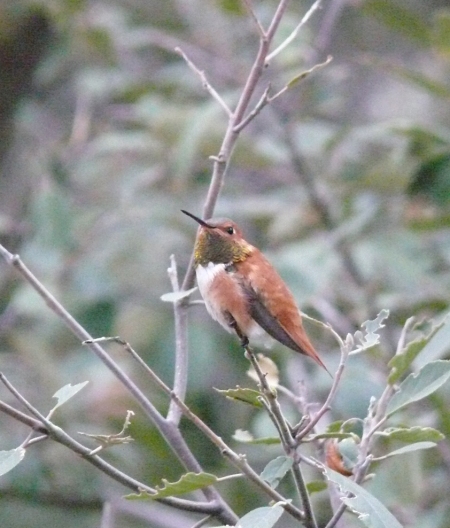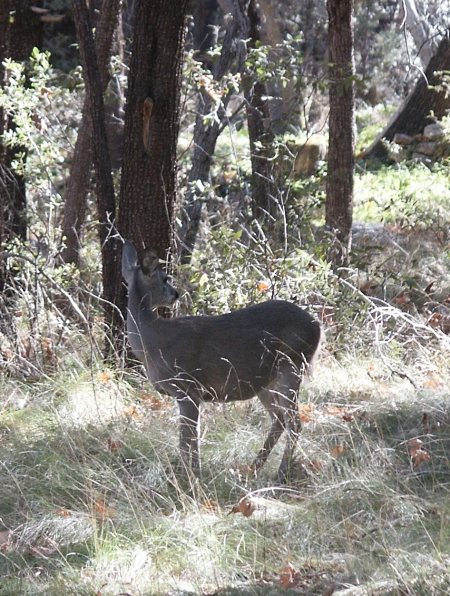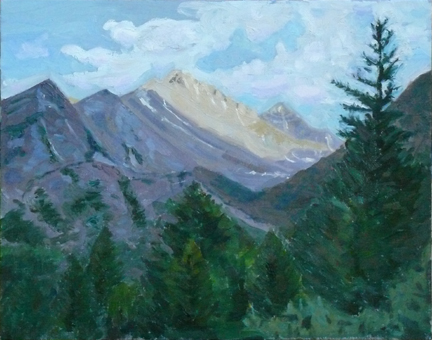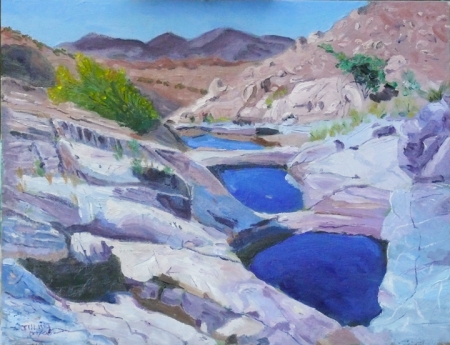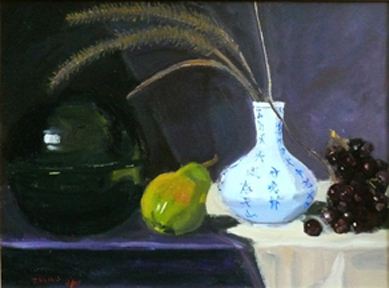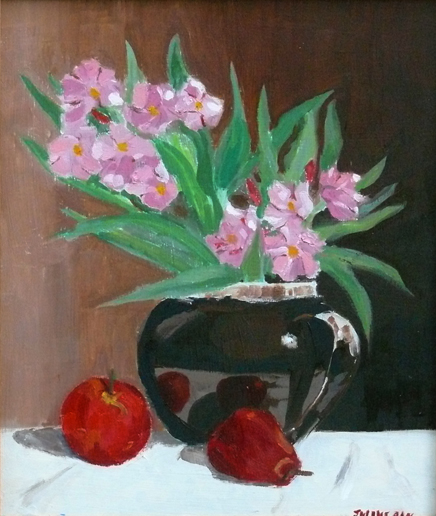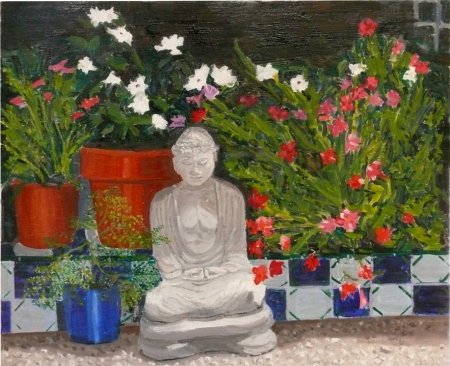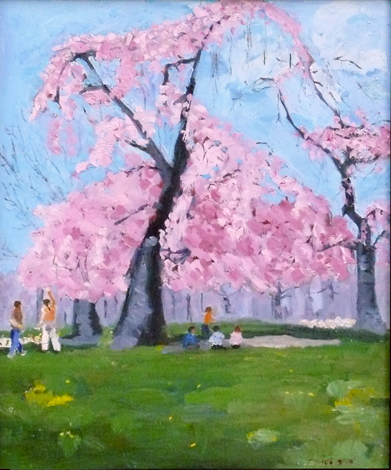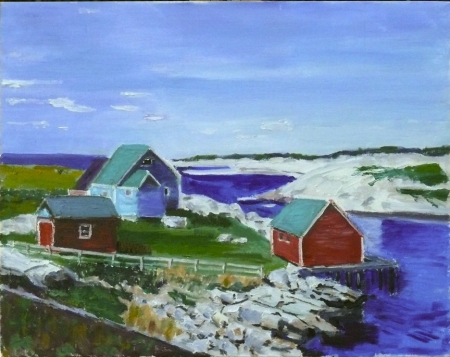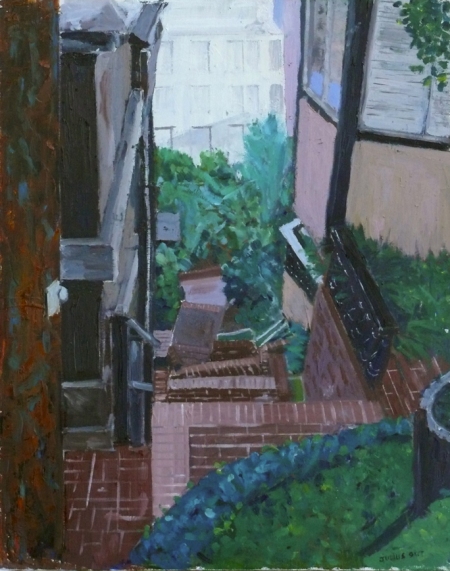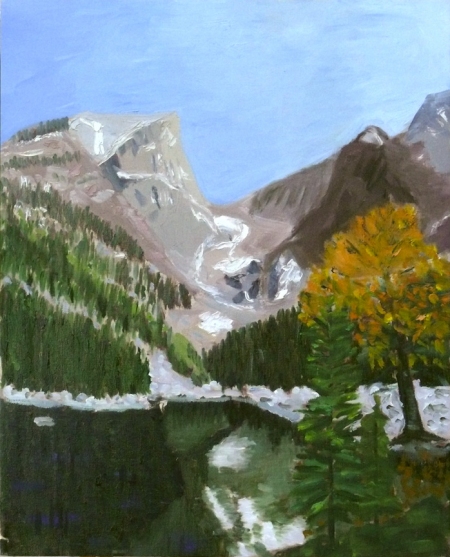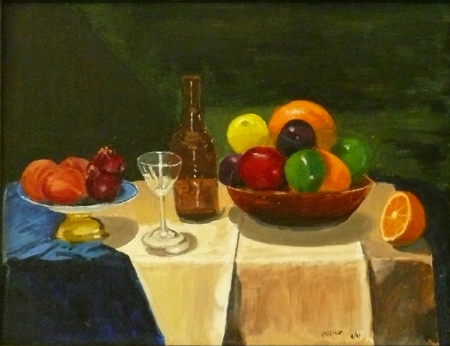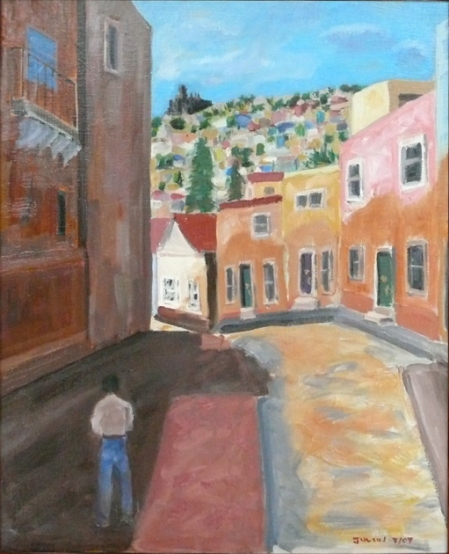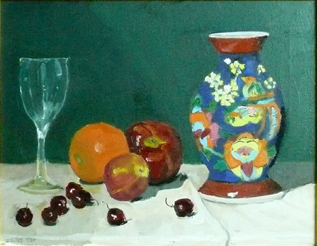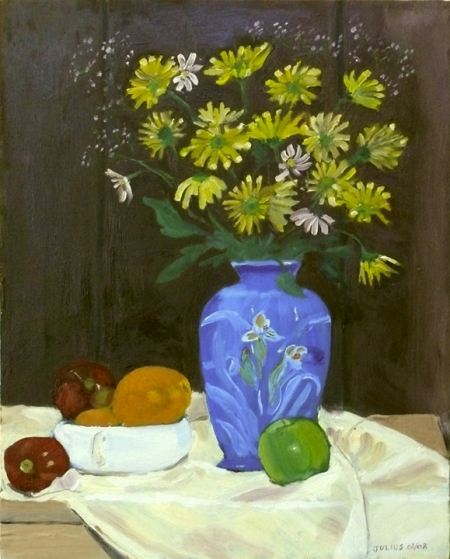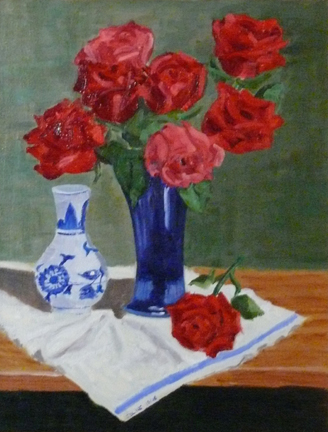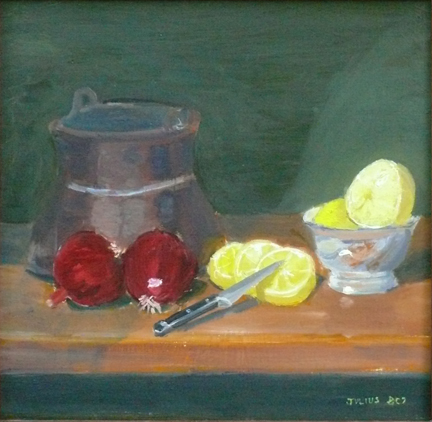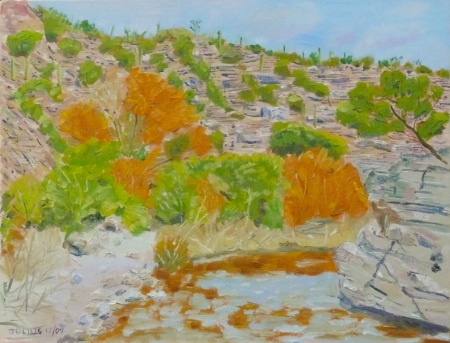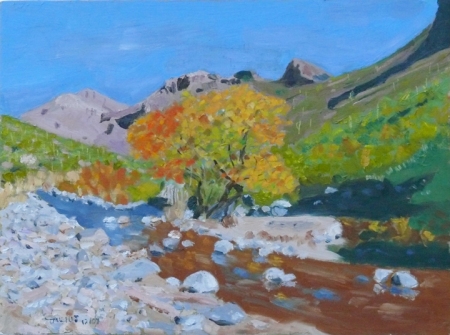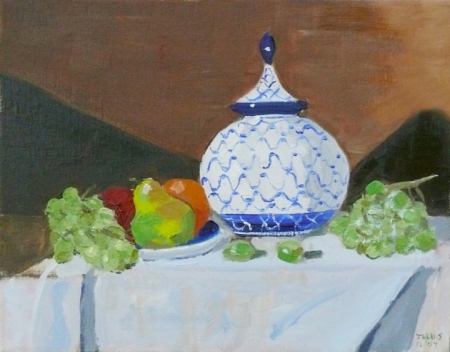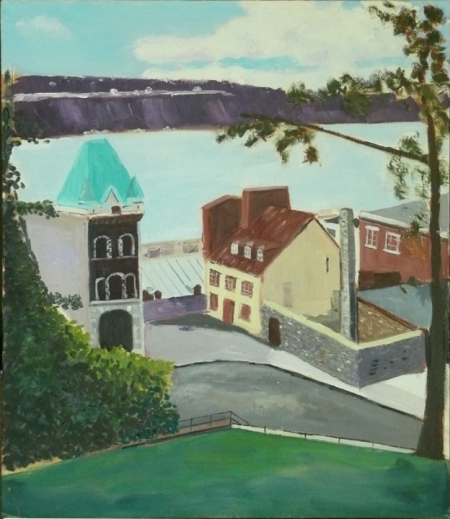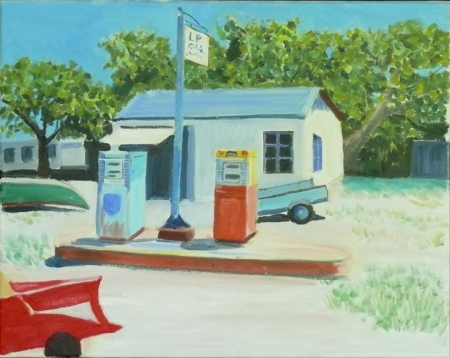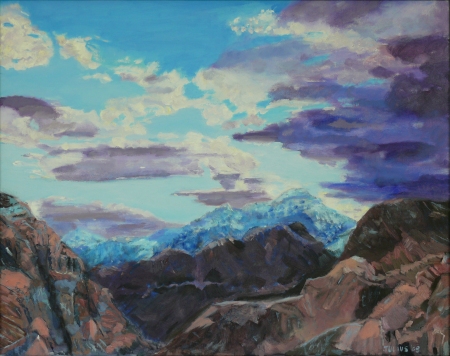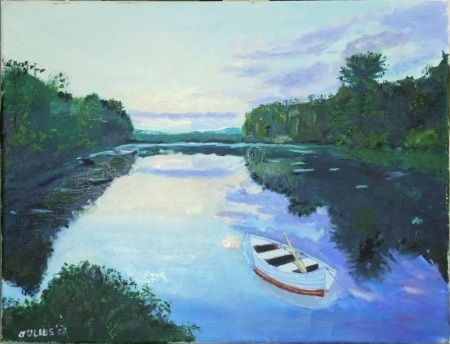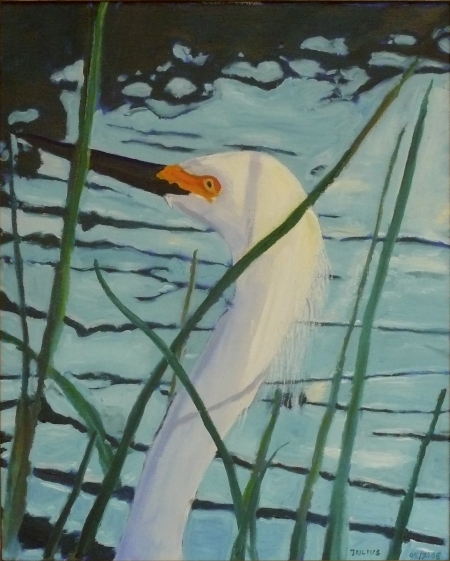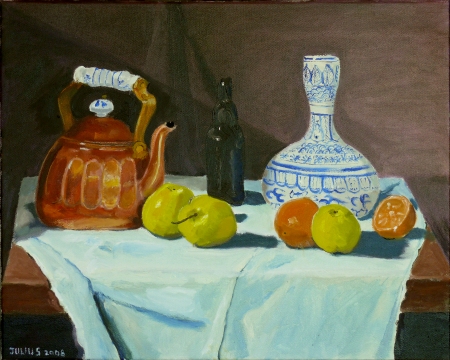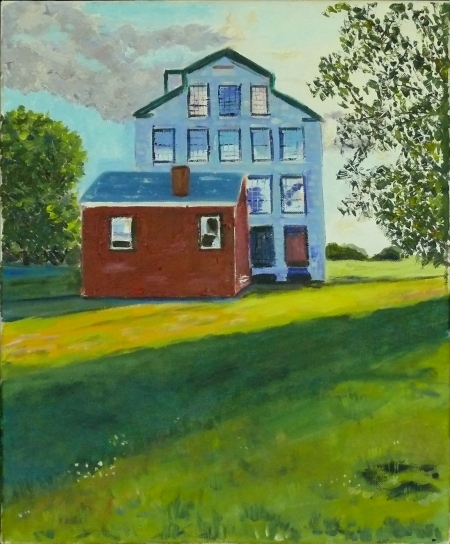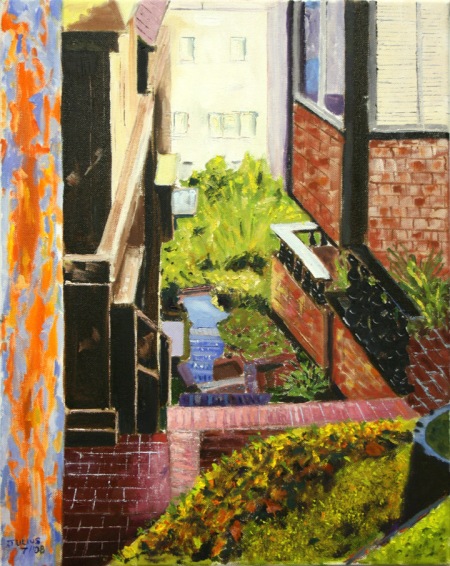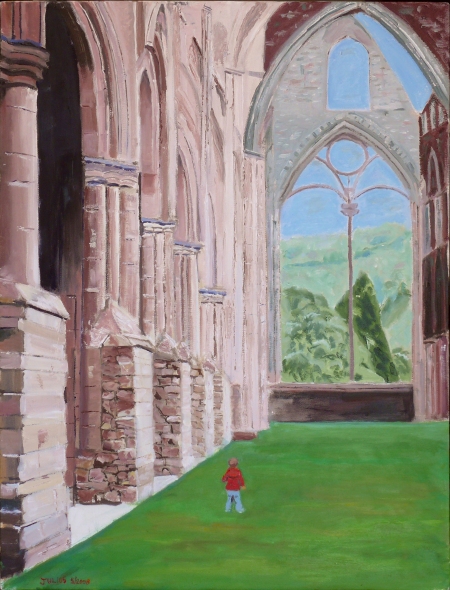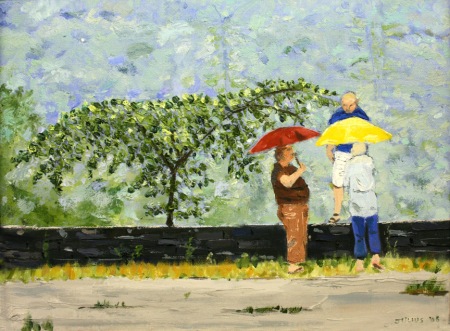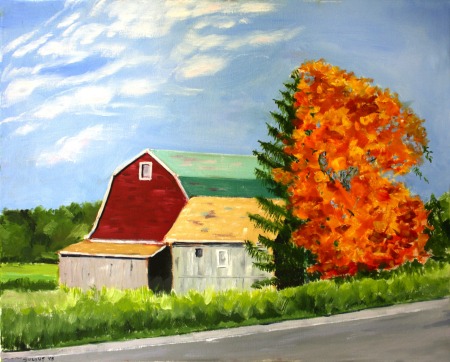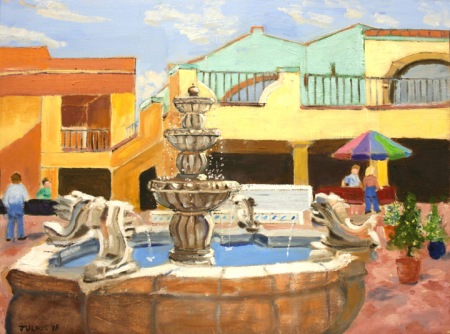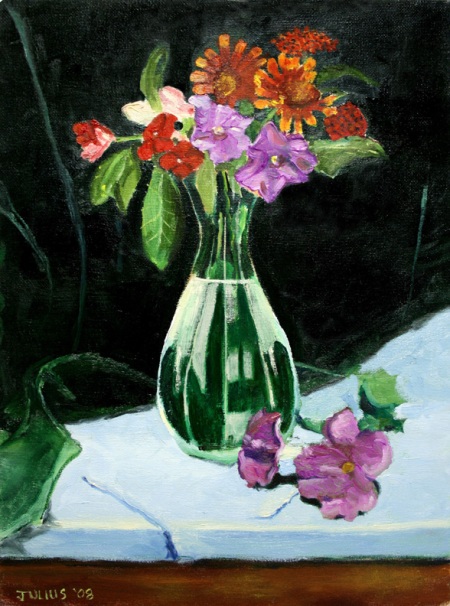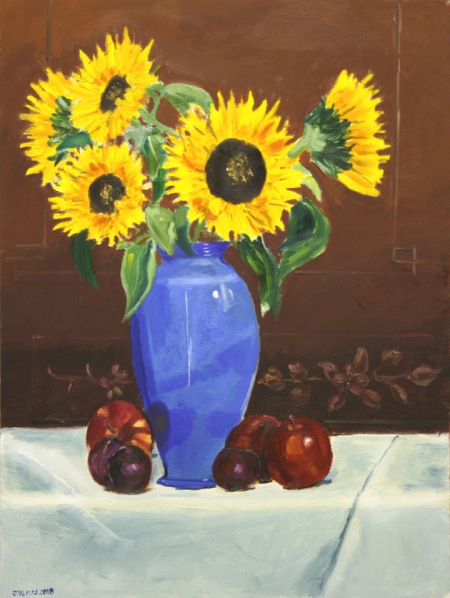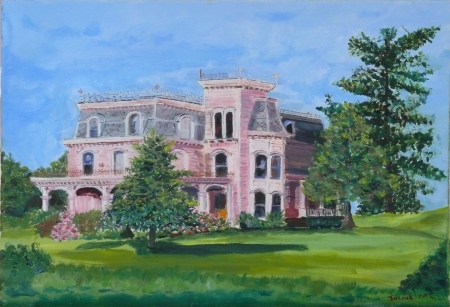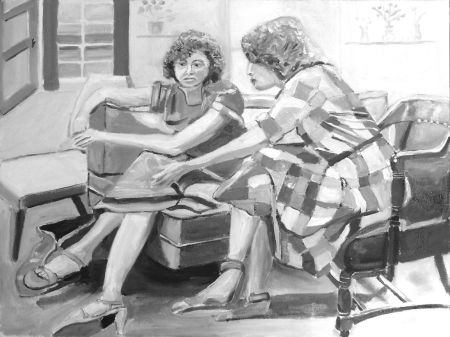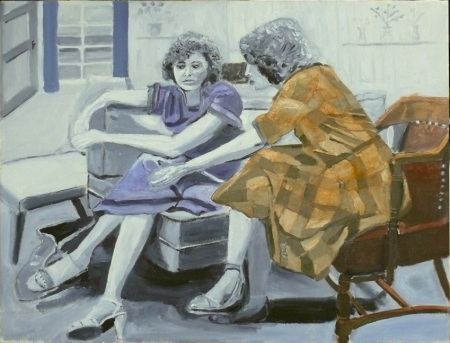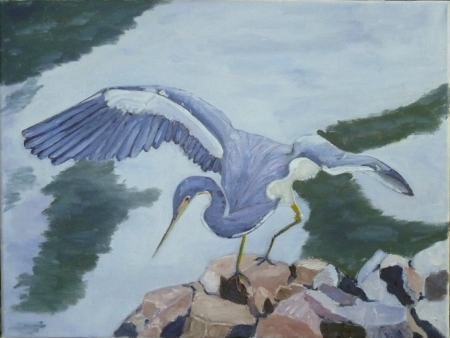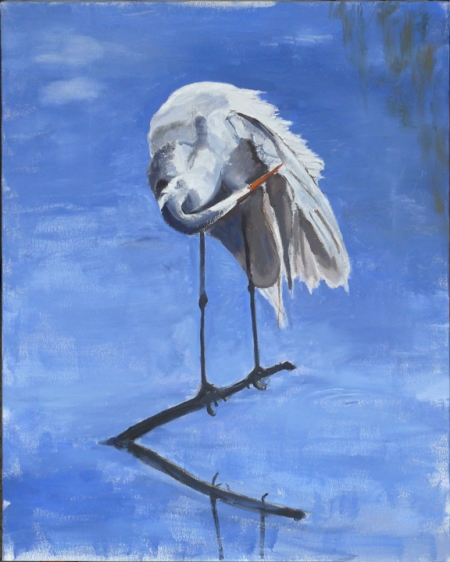I had intended to write a concise, light-hearted description of our travels around Costa Rica from April 20 to May 6 this year, but there’s so much to say it would probably take a book to do the subject justice. It’s not that we did so many remarkable things: we just behaved like your run of the mill tourists. But the country itself is remarkable in a number of ways, and maybe my jottings will reveal some of its character.
I had originally spent two weeks devising an itinerary that would let us drive around – in a rental car – and see as much of the country as possible in that short time. As it turned out, we very early abandoned the itinerary and made our travel plans on a daily basis.
Day 1, April 20, 2010 – We flew Continental from Tucson to Houston and arrived exactly 30 minutes before our next flight was to depart. One of the flight attendants was nice enough to instruct other passengers to stay in their seats until we (and another passenger) could exit the plane. If you’ve ever been in Houston (aka Bush) International Airport you know that it’s a huge hub, spread out over 5 terminals that require ground transportation to travel between. We landed in Terminal B and our next flight was in Terminal E. Even under normal circumstances that would require a lot of effort to traverse in under 10 minutes (to avoid having our seats given away to someone else), but that day a lot of construction prevented us from using the train system. So, running as fast as we could, hitching a ride on one of those electric vehicles, and grabbing the bus, we made it to our gate, sweaty and out of breath, with about a minute to spare. Not a great way to begin the trip.
The flight to San Jose airport (actually Juan Santamaria International) was uneventful. After landing I had to explain to strangers, in rather poor Spanish, that we had to meet the person who would be delivering a cell phone to us. (That’s a long complicated story not worth going into unless you want to learn about such things.) What I first noted was how people rushed to our assistance and how patiently they listened to my fractured language, only occasionally registering a smile at something funny I unintentionally said. After getting the phone from Carlos we shuttled to the Budget rental office and picked up our coche, a Daihatsu 4×4 compact SUV. Every source said we needed to get a 4×4 and in retrospect they were certainly right. We also rented a GPS unit (good move!).
For the first night we had reserved a room at the Buena Vista Hotel in Alajuela, the town closest to the airport. Caution: If you ever travel to Costa Rica, do not stay in San Jose; in fact, avoid San Jose at all costs if possible. It’s a nightmare of traffic at any time of day, and at certain times waiting at a traffic light is like trying to get through New York’s Lincoln Tunnel during rush hour. If you’ve never done that, just use your imagination. Also, it’s extremely rare to find a street sign in Costa Rica, and the capital city is no exception. I guess people keep street information in their memory fro childhood on. So, a GPS navigator – even though it doesn’t work as well as you’d like – is an invaluable tool. But I digress.
We arrived at the Buena Vista around 10 PM, and Juan, our night watchman, opened the gate for us. We parked and quickly found out we didn’t know how to open the hatch door to get our luggage out (Actually, we did know – it was a question of how hard you pulled, but we didn’t know that at the time).
Day 2 – 4/21: In the morning we discovered that the Buena Vista is a beautiful place, with views of coffee plantations and green mountains. The view from our bedroom window gives you some idea.
The hotel gardens were filled with beautiful and exotic (to us) flowers. It even included a nature walk, with signs identifying various plants.
Breakfast at Buena Vista is a pleasure, and it foreshadows similar breakfasts throughout Costa Rica: a whole bunch of fruit, as in papaya, mango, banana, star fruit, pineapple and anything else that grows on trees in the neighborhood. If you like fruit, you will never starve in CR. You can also find many varieties of ginger (below) and other spices growing wild.
By the way, the coffee is sensational; I had actually given up caffeine a couple of months back but I see that on this trip I may as well go back to my addiction. Some of the trees have a dignified beauty I haven’t experienced elsewhere.
I have to wonder if people who live surrounded by such beauty [10426] just ignore it after a while.
After breakfast we drove about 15 miles north to Volcan Poas, a rather quiescent volcano that’s a local tourist and native attraction. Hiking from the visitor center to the overlook above the volcano (about a half mile) we encounter some wonderful plants. Sorry about the fuzzy picture, but I couldn’t exclude this marvelous fern.
Although it’s classified as inactive, Poas shows clear signs of the activity taking place below the crater, one of those signs being the aroma of sulfur dioxide in the air. You can expect Poas to start shooting out molten lava again within a few years.
About a kilometer (km) up the trail the remnant crater of an extinct volcano hosts a lovely lagoon.
While taking in the view we encountered this furry little critter, who was happy to accept some cheese from my backpack. He also started to explore Grace’s pack, lying on the ground, and at one point grabbed her camera case and ran off with it (sorry, no picture). She managed to just save the case with some loud shouting that startled the thief.
We attempted to do the loop trail around the lagoon but it’s a pretty fierce hike for me at about 9000 feet altitude so we poop out in a short time.
Leaving the volcano behind, we drove to what is called a Waterfall Garden (Jardin de las Cataratas) only 10 km or so away. Along the way we pass little settlements and fincas (farms) nestled in the green hill, some of them quite beautiful (this word will be repeated many times).
We also have to negotiate a narrow winding road with many rockslides blocking one lane and large construction vehicles working to clear the slides away. Around 2:30 PM we are engulfed by heavy downpour and have to pull over for a while (Costa Rican rivers don’t mind if they can’t see the road, they just buzz along at high speed anyway). The Waterfall Garden occupies an amazing space, a deep valley between sharply sloping mountainsides, with incredibly lush vegetation as far as the eye can see. It’s hard to convey the scene in a photograph.
We arrived at the gardens about 4:00 and were told the place would close in about an hour and many of the exhibits before that, so we negotiate the entrance price down from $20 to $10. To get to the first waterfall we have to go down 510 stairs plus more grades (that we have to walk UP later on).
About 120 meters high, the waterfall thunders down into a pool and quebrada (creek) below.
At this point Grace wanted to continue DOWN to the next falls, but I opted out – and she followed. On the way back up we pass through a hummingbird “garden” – actually a stone-paved path surrounded by flowering bushes.
We stopped and shot about 100 pictures.(I hope you like hummingbirds!)
Costa Rica also has a diverse population of colorful little frogs, ranging from thumb size – as in this red-eyed guy – down to fingernail size. The Jardin devoted a separate little building (a frogarium?) to house the little creatures.
By the time we made it back up to the 510th step everyone else had gone home and the sky was starting to darken. Did I mention that the road to the Jardin was narrow, curvy, unpaved, rutted, and full of rock piles, mudslides, and construction equipment? The prospect of driving it in the dark was less than promising, but at east we had our faithful GPS to guide us home, right? Wrong… She (GPS) got us thoroughly lost and what should have been a 20-minute drive to the hotel turned into 90 minutes. At last we passed through Alajuela and, seeing a public park with food shops nearby, stopped to get frijoles, arroz, ensalada, papas fritas and Diet Coke to wash it down. While the food was cooking Grace went into the bakery next door and bought a load of cream-filled bread. We sat in the park on a concrete bench and pigged out.
Day 3 – April 22. Next morning at breakfast we talked to a Dutch couple and their daughter and her Tico husband. While I had thought we might Los Angeles Cloud forest our next stop, Grace mentioned she wanted to ride on an aerial tram through the tropical forest. We located one in Braulio Carillo national Park and decided to abandon our itinerary.
Unfortunately, the drive to Braulio Carillo took us through the middle of San Jose – something to avoid if possible. We had to navigate through six numbered highways – numbered, that is, on our Costa Rica map. However, as alluded to earlier, we could find NO road signs within the city. Fortunately, this time the GPS saved our lives, getting us through the city with much twisting and turning, and driving in what seemed to be a permanent traffic jam. Once on the road to the Park, we were able to cruise, stopping only to buy some unrecognizable fruits at a roadside stand; which would have been fine were it not for the nail that got into one of our tires and flattened it good. Just as we pulled over (not on a shoulder, since road shoulders are mostly absent in CR) to assess the damage, a yellow tow truck with Police markings stopped and an Angel named Geovanni emerged to help us change the now useless tire. While he was working on removing the wheel, a delivery truck stopped his truck to help out. They sent us on our way as we wished them muchas gracias.
We brought our ruined tire to a mechanic working just 100 meters past the Park entrance. He cheerfully pitched it in about 9 minutes and told us not to use it on bad roads. When I called Budget to explain what happened, they insisted that if I wanted a replacement tire I would have to pay a $40 fee. And the nearest authorized dealer was about 60 km away, so we decided, “Screw that” and went to the park.
The tram ride was very tranquil, floating along about 200 ft. above the surface and passing huge ficus trees, palms of every sort, and amazing ferns, some in the shape and size of trees. No birds or animals, although an occasional butterfly drifted by. After leaving the tram we saw a couple of brightly colored poison dart frogs and a small snake, but that’s all.
Driving south from the park, we ran into another hour-long snarl of traffic, meandering through many barrios and villages, constantly getting turned around in spite of the GPS. Finally, after directions from many people, we drove into a neighborhood with relatively upscale restaurants; we decided to stop and have something to eat at Applebee’s (I did say relatively upscale – the other places looked too pricey for our budget.). I found a security guard in the parking lot and gave him five bucks to watch our car, which was full of all our personal possessions. Inside the restaurant, our waiter, Juan, spoke eloquently of his desire to excel at serving tables with honesty, respect, and skill. I’d say he succeeded. Juan seemed representative of many Costa Ricans who would do different kinds of work in an advanced capitalist society, but worked at what was available with dignity and pride. Later we collected the car and thanked the guard (who would have done the same without extra pay – that’s his job). We had been told several times that you must be careful about your belongings in CR because of the ever present danger of theft. During the trip we heard that crime rates had significantly increased over the past few years. If you know anything about NAFTA and CAFTA you will understand why Costa Rica is being flooded with immigrants fro Nicaragua and elsewhere who desperately need to earn a living but can’t at home because their economy is being wiped out. More about this later. Anyway, we have even been advised to leave the car’s windows rolled down (of course not leaving anything behind for the taking); one rule to follow is to remove the radio every time you leave the car. I often would put a note on the windshield: “No hay nada de valor en el coche.”
We finally found Route 27, a direct route to the coast of the Gulf of Nicoya, finally deciding to stop about 9:15 and find a place to sleep. By phoning the owner of the Cerro Lodge (there was a small billboard on the highway) we were able to pass through the guarded gate; this was followed by a 3 km drive down an unpaved road, at the end of which we were met by Raimundo, who guided us to our little cabin. The room had a fan for air circulation, cold water for washing and showers, and a bathroom open to the sky that faced a 6-foot fence made of some kind of logs, This enabled bird watching while sitting on the toilet and turned out to be quite pleasant if you ignored the mosquitoes. Even in the tropical heat and humidity, the ceiling fans made the room pretty comfortable. We tried out the cold shower; the water was actually room temperature, I would guess about 90 degrees F.
Day 4 – April 23. We awake to find ourselves in paradise. The views of the countryside are so beautiful they literally bring tears to my eyes. Does this feel as commonplace to Ticos as the Catalina Mountains, as beautiful as they are, seem to us?
Before taking yet another shower, I did some bird watching out the window – mango, papaya, guayabo, and assorted other fruit trees surround the cabin and provide ample food for birds.
As usual, we enjoyed a splendid breakfast of just-picked fruit, toast, and coffee. I’m getting seriously addicted to the coffee, although I have to specify I only want “un poquito de leche, por favor.”The owner and staff are extremely helpful and friendly. After breakfast we walk down the unpaved road. At one point we can se the sea (Gulf of Nicoya, a river, and a lake/pond; the latter is packed with storks and a few spoonbills and egrets.
Later we drive south towards Carara national Park. Along the way we pass over the Rio Tarcoles, a popular spot to park one’s car and lean over the railing to look at crocodiles sunning themselves.
We’ve heard that tout guides will feed chickens to the crocs to impress their tourists. As a result they look fat and happy (the crocodiles, not the tourists).
At the entrance to Carara Park we see what looks like a well-executed sculpture of a large iguana.
When I walk around it for a different view it swivels its head to look at me. We pay our $8 apiece and drive off to a different trailhead which is guarded by a young women who volunteers to make sure no one breaks into parked cars.
About one minute up the trail we see another iguana – then another and another and another…Other lizards, smaller and more colorful, abound at the edge of the trail.
About 15 minutes in we hear loud squawking – probably macaws but we can’t see them. A few minutes later we reach a small lagoon, where a white-faced monkey pops out onto a tree branch just ahead of us; he stares at us from his vantage point on the limb. We hang around at the lagoon for a while. Grace goes into the water a bit to cool off and 5 minutes later I notice a crocodile about 10 yards offshore – that ends the wading.
Continuing up the trail we hear more loud bird noises and manage to spot a pair of scarlet macaws very high in the trees – not so good for photography.
Heading back towards the car we see a coati amble across the trail (I’ve only seen those at the Desert Museum). It bolts when we get close enough to use a camera (hence no photo). We don’t see any more monkeys or macaws but we do run into numerous iguanas.
This tropical rain forest is filled with luxuriant growth and huge trees. Banana plants are everywhere, even one with ripe bananas – which we couldn’t reach for lack of a ladder and a machete.
Later on we drive south from Rio Tarcoles to Quepos, on the Gulf coast. It’s a favorite with surfers, but also a gateway to Manuel Antonio National Park, a very popular place with Ticos and tourists alike. We take a room at Cabinas Calu, a little dive with air conditioning but once again no hot water (once again it doesn’t prove to be a problem). It’s a block from the beach, so we walk over and Grace takes her first ocean dip of the vacation.
She is in love with the tropical ocean water. We don’t know precisely the temperature of the water but she says it’s like body temperature.
One of the other residents recommends a “soda”, which seems to be a generalized term for some place to get food. I enjoyed dinner a lot – a memorable bean dip with chips, empanadas stuffed with cheese or beans and deep fried. Grace didn’t do too well with the empanadas (she doesn’t want to eat any dairy products, so the cheese one was a mistake on my part).
Day 5 – April 24: In the morning, after packing our bags into the car we decide to return to Carara Park, this time taking the trail at the Visitor’s Center The young woman managing the office (staff of 1) was nice enough to provide a room where we could lock our luggage. She insisted it was not safe in the parking lot, especially since she would be taking an hour for lunch. At the trail head we encounter a couple of hikers who say they heard there was a pair of nesting toucans on the trail. We caught up with a group of French tourists watching the toucans attentively. On a different trail the toucans showed up again, but high enough in the trees that photography was not practical (again). After getting lost on the trail we ended up, an hour or so later, on the road about ½ km from the Center. Just before we leave the trail we see what looks like a fluorescent green ball rolling around the forest floor. It turns out to be a pair of frogs mating – the rather fuzzy photo gives you a rough idea.
On the road from Quepos to Jaco we spot a pond with dozens of wood storks and a few spoonbills.
Rather than stay in Quepos, we choose to stay at Finca Amanecer (Sunrise Farm), a property owned and maintained by our hostess Elena. Elena has been in the country for 20 years and wants to develop a sustainable community in Londres – which, by the way, is up a grueling 10 km unpaved road from the main highway. On her 7 acres she has growing mangos, pineapples, ginger, turmeric, cinnamon, and other food crops, which she advertises in he web site: “Pick your own breakfast.” (Here she is doing just that, with machete and kitty cat.)
Elena, who strikes me a bit like a 55-ish ex-hippy, does get interns/volunteers from around the world who come to learn about tropical farming and other topics. We opted to take her cold-water room, which turned out to be optimistic, as it was based on our past experiences and not present reality. Her cold showers were really cold; so much so that we decided to pay an extra $5 a night to get heated water.
By the way, in CR they use a shower heater that would make a US electrician’s eyes pop out. You plumb it into your water supply, and then you connect it to the electrical supply – except the junction point for the electrical is about two inches away from the water pipe. We haven’t been electrocuted yet, but I’ll bet it happens.
Day 6 – April 25: We re up pretty early and, as promised, have to go into the woods behind Elena’s house and pick our own breakfast. In addition to fruits and spices, she has some beautiful bamboo. Since bamboo grows wild all over CR, there is no commercial potential there – she has already mentioned that she would like to sell her spices on the market.
We made a day trip to Manuel Antonio Park, which would be only a few minutes away if not for that 10-km dirt road. A funny little drama plays out along the way: as you get close to the park, young men jump out in front of the car, some with flags and police whistles, and indicate that you MUST park where they point to. If you manage to ignore 5 or 6 of these recruiters you finally get to the official parking area for the park. Such is the nature of work and business in a developing country. We got on a pretty arduous trail that ended in a waterfall; along the way we saw some white-faced monkeys playing in the trees.
The waterfall created a nice deep pool, excellent for cooling off.
A second trail led us to the park’s white sand beach, where we saw more white-faced monkeys as well as howler monkeys that were too far for photography. But they emit very impressive sounds for so small a body.
Day 7 – April 26: After the usual fruity breakfast we ride down the “road from Hell” (with Bill, another guest at the Finca) and meet our rafting tour guide at the Quepos hospital. After another 40 minutes on yet another unpaved road we end up at our embarkation point in a remote area on the Rio Savegre (Savage River). The entire group consists of 11 people, and we split up into two groups of five, while the tour leader takes his own on-man kayak in the lead. The tour leaders in each raft spent about 5 minutes giving us some minimal training, after which we push off and start paddling furiously. Our first rapid is a Class 2, quite tolerable for an amateur, but the next and all succeeding ones are Class 3 or higher. Our raft leader, Ezekiel, does an excellent job of shouting out orders to his “crew”: “Forward!”; “Backward!”; “DOWN!”; “everyone left (or right); and so on. However, at one point as we negotiated a pretty rocky rapid I didn’t execute the DOWN command fast enough and pitched over into the river.
While the life vest kept me nicely afloat, before I could even get my bearings Ezekiel grabbed me by the vest straps and helped me back aboard. After that I was somewhat shaky, expecting at any minute to fall in again and hit my (helmeted) head on a rock. At one point the group landed and we walked and waded to yet one more gorgeous waterfall. In the wading part I actually needed assistance to make it to the base of the falls. Guess I’m getting old…
A couple of hours later, we disembarked downstream and took a short ride in a van to a wildlife rescue center where our car was waiting. At the center I spotted the largest locust/grasshopper I’ve ever seen and caught another glimpse of scarlet macaws.
From Quepos we rode south to Uvita and checked in at the Hotel Tucan, which has a very interesting layout: a large (maybe 50’ by 100’) covered patio surrounding tiny rooms. The size of the room was made up for by air conditioning, hot water, and a reasonably complete kitchen for the guests, including a little cook stove, fridge, dishes, pots and pans, and a wooden counter top for food preparation. While at the Tucan we ate a lot of fruit salad. The hotel also features a little restaurant operated by an Italian expatriate who is clearly the paramour of Steve, the hotel’s owner. The chef was never without a lit cigarette in her mouth. On the other hand, Steve was also a chain smoker. Steve’s affect suggests he had done a ton of drugs in his youth, but he is genial and helpful. He also provides for the guests three computers with high-speed internet connection. We and the other guests took advantage of these any time of day.
The Tucan is in a convenient spot, one block away from supermercado, farmacia, liquor store, and bank. A note on banks in Costa Rica: They are very paranoid or they have had a lot of unfortunate experience with bank robbers. In most cases (and the Uvita one was no exception), it was impossible to bring a backpack inside. You either had to leave it with a guard or use a little key locker provided by the bank and outside the banking area. After surrendering my pack I was checked with a metal detector and asked to take a number and wait for service. Once called to a bank employee’s desk I explained my need to cash an American Express travelers check, after which I had to sit for 30 minutes while he verified every piece of information available regarding my life. With minor variations this was the practice around CR. In one instance (in San Vito) customers had to pass, one at a time, through an electric “airlock” consisting of two glass doors with a tiny chamber between them. They had one such lock for both entering and leaving customers. More about that bank later.
Just up the road from the Tucan, a trail leads to a waterfall that is hard to access because of recent heavy rains. A second road leads to private property containing numerous stands of bamboo of different types and sizes. These were clearly planted many years ago, as some of the bamboo trunks were at least 6 inches in diameter.
On the way back to the hotel we pass a typical Tico cemetery, I which all graves are above ground and relatively unadorned but covered with white ceramic tile.
Evenings at the Tucan: we make a little salad for dinner, check our email and look up places to visit on the Internet. The first night I decided to do laundry and, failing to see step down into the dark laundry area, I fell pretty heavily, leaving me sore for about three days – but nothing broke and I sustained some minor scratches and abrasions.
Day 8 – April 27: It’s a short drive in the morning to Marino Ballena national Park, where we encounter a single, lonely park ranger in a run-down booth. Pointing to the beach he explains that we can park anywhere we want, so we move the car into a palm grove a couple of hundred yards in from the entrance, and walk a couple of yards to the beach.
What I first take to be flocks of small red shore birds running across the sand turn out to be many red burrowing crabs, from 2 to 3 inches across, out to browse in the wet sand flats and running to escape predatory birds. If you make a move of any kind they dash into their burrows and eye you suspiciously from the entrance hole. Judging from the number of holes, each crab must have multiple burrows. The other wildlife we encounter on the beach are small black ants that bite viciously on our bare feet, leaving me with painful welts that take more than a week to heal. And a yellow breasted flycatcher (probably a kiskadee) was kind enough to pose for me.
In the early afternoon we board a boat, about Boston Whaler size, for a Dolphin Tour. At other times of the year it would be a Whale and Dolphin Tout but the whales have already left for their journey north. After about 10 minutes at high speed we stop, put on snorkeling gear and watch the colorful fish swimming by.
Next our captain moves us quickly out to open water for dolphin chasing. Spotted dolphins play and hunt all around us. They seem to enjoy running ahead of the boat. One amazing site is a dolphin chasing a 2-foot needlefish, the latter literally flying through the air for abut 30 to 40 feet, the dolphin close behind. At one point a needlefish jumps into the boat. After he quiets down our tour guide gently lifts the fish up and releases him into the water.
We try another go at snorkeling, this time in rougher water. I have some difficulty due to water getting into my mask (presumably leaking around the facial hair), but we soon abandon the site as too murky for viewing.
After beaching the boat we see an intensely green lizard that seems to be resting, but when I try to get a close-up he scoots away at terrific speed.
Day 9 – April 28: Other passengers on the dolphin boat, a couple of women on vacation, had told us they were staying in a really nice hotel in Uvita with wonderful views and a great restaurant, the only drawback being they had to be shuttled back and forth to get to the main road, buses, etc. We decided to go and have a look. This tie we had to drive up a very steep and scary unpaved road to the Whales and Dolphins Hotel. At one point we even wanted to turn around and go back down, but there was no place to turn the car around, so forward we go. When we do get to the top and the hotel, we find that the views from the restaurant terrace are indeed marvelous. However, even better, a pair of toucans flies up and lands in a tree at our eye level.
Day 10 – April 29: On our way from Uvita to Buenos Aires and San Vito, we spend a half day driving through magnificent countryside alongside the Rio Grande de Terraba. We stop dozens of times to photograph the scenery.
Buenos Aires is only a stop along the way: there are a couple of gardens/refuges near San Vito that would be nice to visit and B.A. is a convenient stopping point. We stay at the Cabinas Kamarachi, a modern, decent enough place, although we don’t understand why so much of the room is taken up by a Jacuzzi bathtub. Our room is on the second floor, and as I go down to the car to fetch a suitcase it is raining, making the tiled stair slick, and boom! I’m on my butt with a corner of the stair poking into my lower back. I’m beginning to feel uneasy about the number of “accidents” I’m having here…
Buenos Aires apparently is in the center of the pineapple growing area. Dole has a packing plant here and you can almost smell the pineapples in the air.
First I need to go to a bank to cash some American Express checks. The bank has a huge line in front. All right, then, how about an ATM? That too is in heavy use and it will clearly take a long time to get to it. I ask a local who tells me about another bank in the center of town, but when we get there, the line is around the block. Rule: Don’t try to use a CR bank on Friday – it’s payday and everyone else needs to use it too.
Unfortunately, running around trying to get money wastes a lot of time, and by the time we get to San Vito (on a long, nearly single lane road the branches off the Pan American Highway) the rains have started. Along the way we stop at a little stand where a man, clearly a native, is selling art and plantains. We buy a fabulous carved mask from him. When we get to the first garden, the Finca Cantaros, we see that his work is featured, in fact his photograph is on the wall. The garden is small but has some unique features, including eucalyptus trees that look as though they were painted by an abstract expressionist.
After leaving Cantaros we proceed to Las Cruces/Wilson Botanical Garden, a research facility with an incredible collection of tropical plants, which in turn serves as habitat for many animals. Unfortunately, the rain is now coming down very hard. The young man at the visitor center gives us a deep discount because of the rain and we set off – Grace has her plastic poncho but somehow I have managed to lose mine. Never mind, my cold weather sweater works perfectly to protect against the wet. In the rainy darkness we did manage to glimpse some wildlife: a pair of Tinamou – fat, essentially flightless birds about 15 inches tall with a small head and a very plump body. We also observed a few agoutis, but in both cases it was too dark to get any pictures.
San Vito, like many Costa Rican towns/cities, is laid out according to ancient cattle paths, I think, and attempts to create traffic patterns only add to the confusion (Don’t get me wrong — this is much more interesting than good old grid-patterned Tucson). Trying to find a route out of town, I believe I drove past the same plaza six or seven times. When I finally made a decision about which direction to take (the GPS was useless in the downpour) it turned out to be a very bad decision. We drove about 40 minutes until the road turned into a muddy, rock-strewn path that was apparently leading to a dead end. A local woman whose car we flagged down told us she could lead us back to San Vito, which she did, in addition pointing to the correct route out of town. However, by that time i was tired and it was getting pretty dark, and I was in no mood to drive at that point. We parked and walked around a bit trying to find some place to eat. Stumbling into a cafe, I spoke to a sitting policeman who was there with a woman I perceived to be his girlfriend. Wrong again: she was a Peace Corps volunteer living in San Vito. Her Spanish was flawless and her English even better — she directed us to a pizza place up the hill. There the pizza was decent and the server, based on her accent, was clearly Italian . Having stuffed ourselves with cheese-bread-tomato sauce, I decided I could drive back to Buenos Aires after all.
This was a terrible mistake, an act of bravado I swore (after it was over) I would never do again. Although the rain had stopped at that point, because we were driving through low mountains we had to contend with fog, in its way worse than pouring rain. As you know from your own experience, headlights simply bounce back from fog, making them worse than useless. However, this did not deter Costa Rican drivers, especially big trucks coming in the opposite direction. They seemed to feel the fog was a challenge to their ability to drive fast – which scare the crap out of me when they cam whipping over a hill or around a bend. Let’s just say that by the time we had connected with the Pan American Highway we were both feeling very tense. We arrived back at the Kamikaze (as I was calling it then) around 10 PM, quite exhausted.
Day 10 – April 30: Our next destination, San Isidro del General, is only 65 km from Buenos Aires, and The Los Cusingos Bird Sanctuary, established by Alexander Skutch in the 1930s. On the way we drove pasts many pineapple fincas and stopped to walk around in the fields a bit. Skutch authored many books about birds, but the one I was familiar with from graduate school days is Birds of Costa Rica. To get to Los Cusingos was not all that difficult, but by the time we arrived the rains had already started. Still, we determinedly trudged through the sanctuary wearing our ponchos (I’d found mine by then), rain dripping from our hoods to our glasses. In spite of the inconvenience, it is an inspired location, an ideal spot for Costa Rica birdwatching – if it wasn’t raining. The rain finally let up at the time we had circled back to the Skutch home (by the way, he and his wife are both buried here in a beautiful gravesite), and an attendant offered us a tour of the house. I loved the architecture, which looked something like this:
Every room has a separate outside entrance, and no rooms are connected directly. No matter where you are, when you open the door you are outside!
We did get in a little birdwatching from the porch and we also explored the family garden
On our way out of the refuge we were deluged with rain again so we stopped at a little soda for a bite to eat. The birds took cover as best they could but everyone got wet – except us, of course.
On our way out of the refuge we were deluged with rain again so we stopped at a little soda for a bite to eat. The birds took cover as best they could but everyone got wet – except us, of course.
Now it’s back to San Isidro, where we managed to get a hotel room downtown. This was our first opportunity to explore in a Costa Rican city. We walked down the street and passed an auditorium where 500 or more people were attending a revival meeting, with pastor, band, and all – and this was a Saturday night! The audience was on their feet, waving their arms to the ceiling and singing. Next stop was a coffee shop in a fair-sized mall. Nobody was praying there so I ordered two coffees and a tiramisu flan – really very good. Afterwards it looked like everyone was closing shop so we headed back to the hotel to watch a little TV before going to sleep.
Day 11 – May 1: In the morning we go out looking for a place to eat, but the abundance of eateries we saw the previous night were all shut down for Sunday. Luckily the hotel had a small restaurant that served a pretty good gallo pico. We relaxed in the pool for a while and planned what to do and where to go as our holiday time ran out.
We had originally intended to drive up the Pan American all the way to San José, stopping at any interesting places we could find. However, rereading the guide books we found daunting descriptions of the road north of Buenos Aires, e.g.: “…the steep, fog-shrouded highway, which climbs into the clouds, is considered one of the most dangerous in Costa Rica. During the rainy season landslides may partially or completely block the road, and enormous tractor trailers and passenger cars overturned in ditches are common year-round. Avoid riving this section at night; if you do, take it slowly.” That was enough of a deterrent. We chose to make it back to the beach and take the well-paved and safe road back to San Jose. W arrive at Quepos in the early evening, where we booked a room at the Best Western, then went across the street to get a bite to eat and watch the rain coming down in buckets.
Day 12 – May 2: Free breakfast at the hotel, then a walk along Quepos beach, followed by a walk to the Post Office, where I am to buy some stamps for my sister Louise, an avid stamp collector. Inside the one-room post office I communicate with the employee that I want a variety of new issues, not knowing that he would have to tally up the amount for each stamp individually. This makes the process embarrassingly long but local people are patient and they even ask about Louise’s collection.
Driving along the ocean highway w pick up a family of three who want a lift to the next town. As we continue up the road, the rain stops and the sun makes an attempt to show itself. Grace wants to stop and enjoy one of the beaches in the area, so we pick a road at random and make our way down to the water. I order a soda and the server, who comes to our outdoor table, explains that he is a tour guide and would we like to go on one of his tours? We answer in the negative, so he proposes that his friend Carlos walk us down the beach to a place where there are scarlet macaws. Sure enough, we reach a small grove of almond trees in about a hundred yards, and the branches are full of macaws, all screeching their heads off. We finally get some good photos to bring home.
Exploring the area around the beachfront restaurant, we come to a mango tree that has enough fruit on it, and on the ground, to feed a village. We score a few for ourselves, then get back in the car.
A few miles further up and we pull into the town of Tarcoles and head down to that beach to watch the sunset. We have a conversation with a group of young people – maybe in their 20s – then sit down and watch the sun in its descent toward the water.
We notice a grand-looking building behind us and one of the locals tells us it’s a hotel. While driving through Tarcoles toward the hotel we see a sign advertising the famous crocodile tour. I have a suspicion it’s going to be tacky but we agree to sign on in the morning.
Now it’s back to San Isidro, where we managed to get a hotel room downtown. This was our first opportunity to explore in a Costa Rican city. We walked down the street and passed an auditorium where 500 or more people were attending a revival meeting, with pastor, band, and all – and this was a Saturday night! The audience was on their feet, waving their arms to the ceiling and singing. Next stop was a coffee shop in a fair-sized mall. Nobody was praying there so I ordered two coffees and a tiramisu flan – really very good. Afterwards it looked like everyone was closing shop so we headed back to the hotel to watch a little TV before going to sleep.
Day 11 – May 1: In the morning we go out looking for a place to eat, but the abundance of eateries we saw the previous night were all shut down for Sunday. Luckily the hotel had a small restaurant that served a pretty good gallo pico. We relaxed in the pool for a while and planned what to do and where to go as our holiday time ran out.
We had originally intended to drive up the Pan American all the way to San José, stopping at any interesting places we could find. However, rereading the guide books we found daunting descriptions of the road north of Buenos Aires, e.g.: “…the steep, fog-shrouded highway, which climbs into the clouds, is considered one of the most dangerous in Costa Rica. During the rainy season landslides may partially or completely block the road, and enormous tractor trailers and passenger cars overturned in ditches are common year-round. Avoid riving this section at night; if you do, take it slowly.” That was enough of a deterrent. We chose to make it back to the beach and take the well-paved and safe road back to San Jose. W arrive at Quepos in the early evening, where we booked a room at the Best Western, then went across the street to get a bite to eat and watch the rain coming down in buckets.
Day 12 – May 2: Free breakfast at the hotel, then a walk along Quepos beach, followed by a walk to the Post Office, where I am to buy some stamps for my sister Louise, an avid stamp collector.
Inside the one-room post office I communicate with the employee that I want a variety of new issues, not knowing that he would have to tally up the amount for each stamp individually. This makes the process embarrassingly long but local people are patient and they even ask about Louise’s collection.
Driving along the ocean highway we pick up a family of three who want a lift to the next town. As we continue up the road, the rain stops and the sun makes an attempt to show itself. Grace wants to stop and enjoy one of the beaches in the area, so we pick a road at random and make our way down to the water. I order a soda and the server, who comes to our outdoor table, explains that he is a tour guide and would we like to go on one of his tours? We answer in the negative, so he proposes that his friend Carlos walk us down the beach to a place where there are scarlet macaws. Sure enough, we reach a small grove of almond trees in about a hundred yards, and the branches are full of macaws, all screeching their heads off. We finally get some good photos to bring home. Exploring the area around the beachfront restaurant, we come to a mango tree that has enough fruit on it, and on the ground, to feed a village. We score a few for ourselves, then get back in the car. A few miles further up and we pull into the town of Tarcoles and head down to that beach to watch the sunset. We have a conversation with a group of young people – maybe in their 20s – then sit down and watch the sun in its descent toward the water. We notice a grand-looking building behind us and one of the locals tells us it’s a hotel. While driving through Tarcoles toward the hotel we see a sign advertising the famous crocodile tour. I have a suspicion it’s going to be tacky but we agree to sign on in the morning.
Day 13 – May 3: We get out early to catch the 8:00 AM boat, but get lost on the way to the dock, finally arriving a few minutes late. The tour staff are completely relaxed – we’re told that a couple of other people will fill out our party. As we emerge from or car, a bus pulls up and starts to discharge about 30 senior citizens, most speaking English. I say a silent prayer that we won’t be on the same boat with them (not that there’s anything wrong with them!); my prayer is answered when our tour guide says we will be going on our own boat with the two other young men, both from Canada. Next to the dock is a sizeable gift shop replete with handicrafts made by… Indonesians and Chinese. Either they can’t find any local artisans or the locals can’t compete with the imports on price.
Our boat has about 16 seats for the four of us and, thank heaven, a tarp covering the entire deck (I forgot my hat and the sunscreen. We set off on the Rio Savegre, the same river we rafted on a week earlier but in this area it is a slow moving estuary. Our guide turns out to be brilliant. At the young age of maybe 25-39, he knows more about Costa Rican natural history than the average Ph. D. candidate in ecology. Furthermore he has the eyes of an eagle – he is able to spot birds from a distance that requires binoculars for me, and he can identify them with ease. This is fortunate, since we see many species of unfamiliar birds, including Mot Mot, Yellow-headed Caracara, Boat-billed Night Heron, Wood Stork, Great Blue, Green and Tri-colored herons, Sandpiper, Tiger Heron, Cattle Egret, Snowy Egret, White Ibis, Whimbrel, and various swallows, among others.
Numerous crocodiles cruise the river, and we see great numbers of babies. At one point the captain gets out of the boat and, holding a large piece of raw chicken, offers one of the bigger crocs a snack. The crocodile snaps up the chicken, but it looks like he would have preferred the captain for lunch. Our guide tells us later that he knows one tour guide who was mauled by a croc doing this sane chicken routine.
We’re also introduced to a gargoyle-like creature called the Jesus Christ Lizard, for its ability to run on water. Ours sits quietly on a tree stump.
